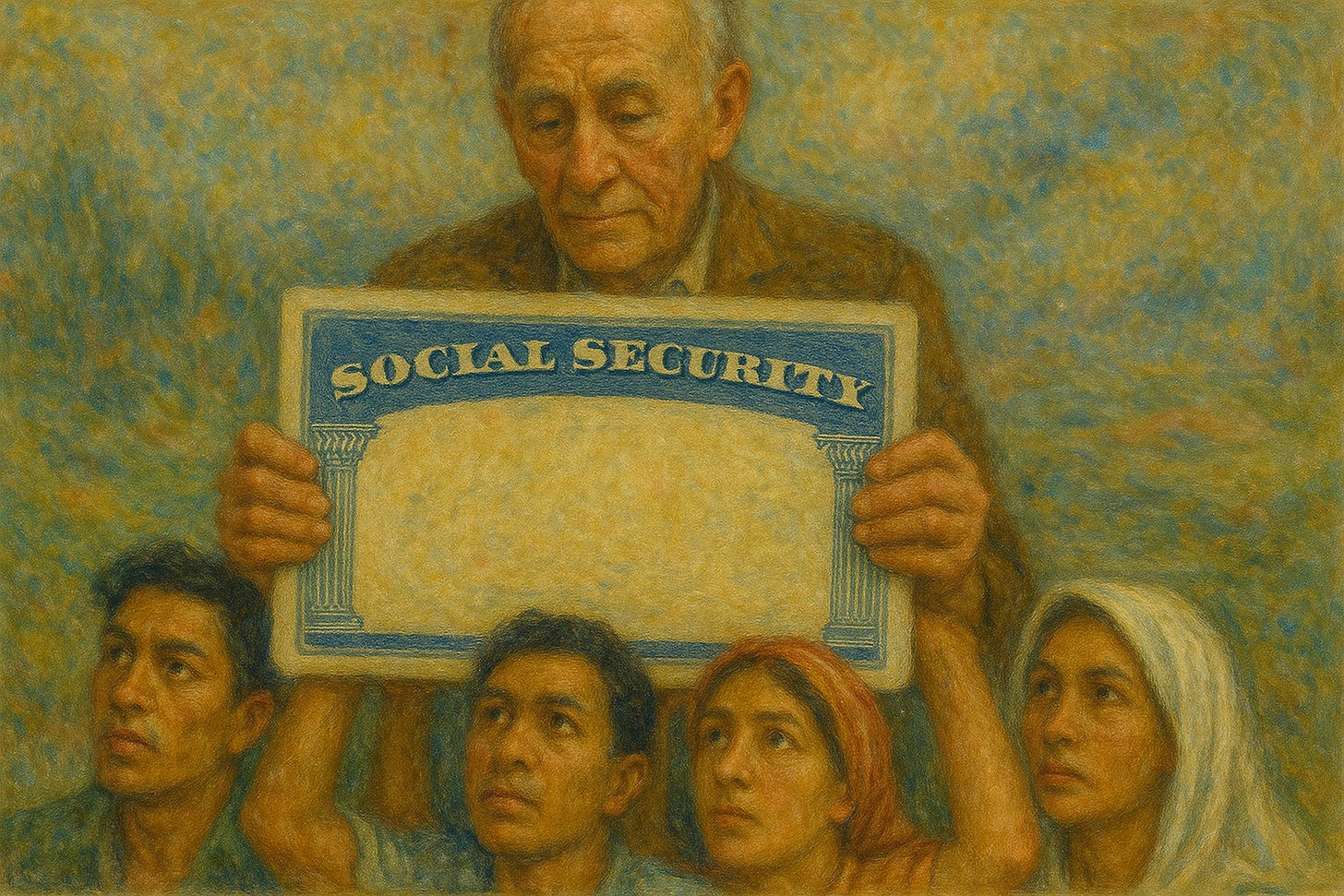Without Immigrants, Social Security Breaks Down. Why?
Today’s workers fund tomorrow’s retirees—but we’re running out of workers. Commentary
Author’s Note: This post is published as a Commentary — an urgent personal reflection based on my decades of work in national security, resilience, and governance. It is not a fully sourced Stability Brief Analysis, but a perspective offered to help readers think clearly and act wisely in a volatile moment.
At a Glance:
Social Security could run dry in less than a decade. The U.S. birthrate is below replacement. Younger, working-age immigrants are one of the only reasons the system hasn’t already buckled. The debate may be ideological, but the math isn’t.
Social Security is a pay-as-you-go system: today’s workers fund today’s retirees. But when the number of retirees grows and the number of workers plateaus or shrinks, something has to give. That “something” is the financial future of millions of Americans.
And unless we address the country’s declining birthrate, immigration may be the only thing keeping the system afloat.
The Demographic Crunch
The United States faces a double bind: too few births and too many retirees. The number of workers supporting each Social Security recipient is falling fast. Without enough new workers to replenish payroll tax revenues, the trust fund is on a path to depletion.
Simply put, the Social Security system was built for a country we no longer are. One where more money is coming in than going out.
Immigrants Are Already Holding the Line
Immigrants—particularly recent arrivals—are more likely to be of working age. They pay into the system for years before they ever qualify for benefits, and many never do. Yet they contribute billions annually to Social Security, helping stabilize the very system some politicians claim they threaten.
As I explored in “America’s Invisible Workforce is Under Siege,” immigrants power the industries that never pause, such as hospitality, agriculture, caregiving, construction, and logistics, quietly sustaining the very infrastructure of daily life.
Benefit cuts would come even sooner without their labor, tax contributions, and demographic ballast.
A Policy Blind Spot
Despite the data, U.S. immigration policy remains largely disconnected from Social Security solvency. Washington argues over border crackdowns while ignoring the workforce realities staring us in the face.
Failing to align immigration policy with economic need is bad politics. It’s also financial malpractice.
What Needs to Happen
To protect Social Security and its promise, the U.S. can raise the Social Security tax cap of $180,000 and/or cut benefits. It could also increase immigration. Congress could
Modernize immigration policy to match demographic and labor needs.
Expand employment-based and family-based legal immigration pathways.
Shift public discourse away from scapegoating and toward sustainability.
This isn’t only a moral plea. It’s an economic one.
The Promise
America made a promise to its retirees. That promise depends on having enough workers to fund it. The hard truth is that we won't have enough workers without immigrants.
We don’t have to guess what happens when we ignore the math; we’re living it. The only question is whether we’ll act before the checks start shrinking.
This is a red alert for me. How important is it to you? Leave a comment. Share the post. Restack it.







Unfortunately, those who set the regulations, do ot rely on soc. Sec.